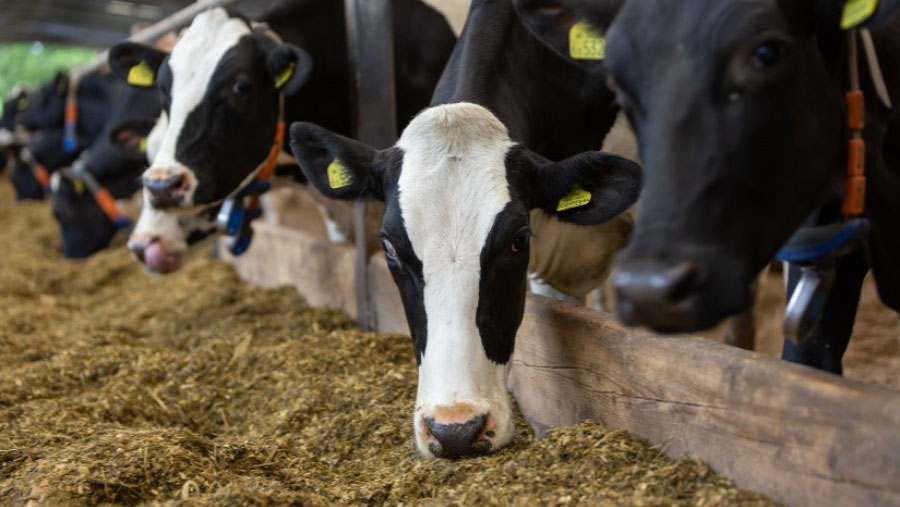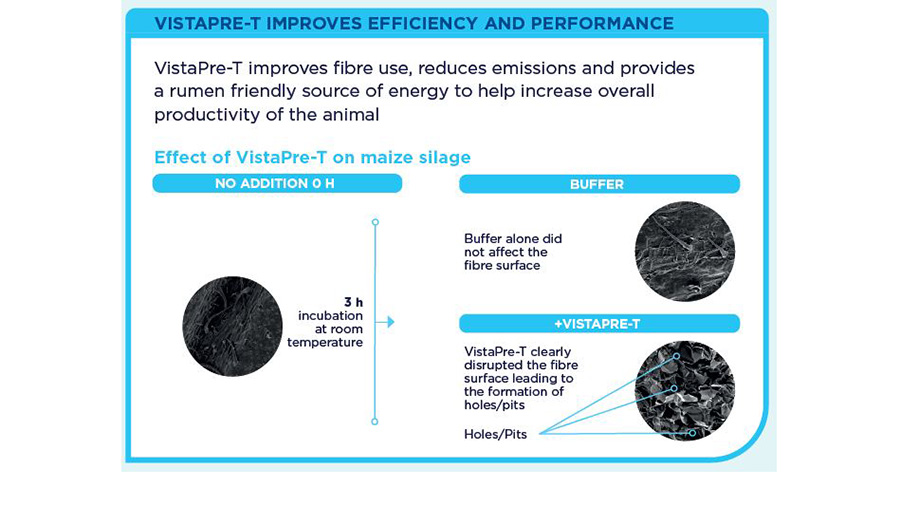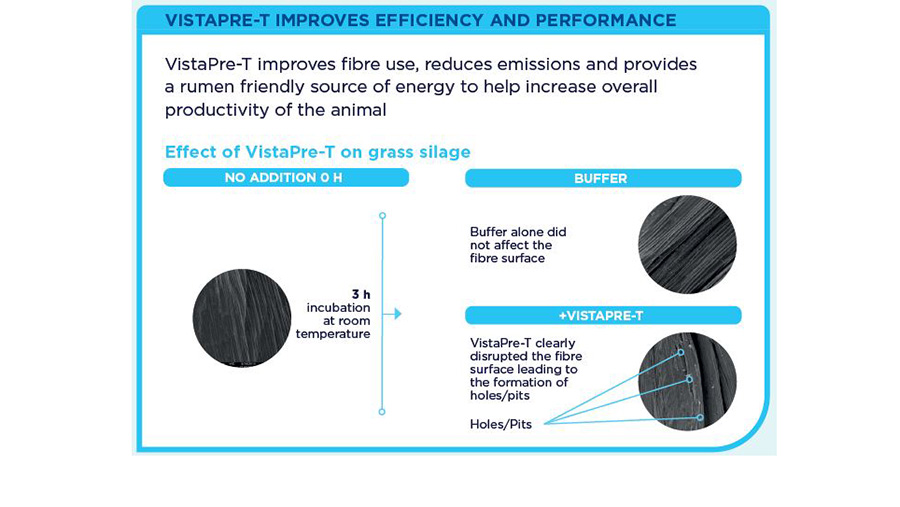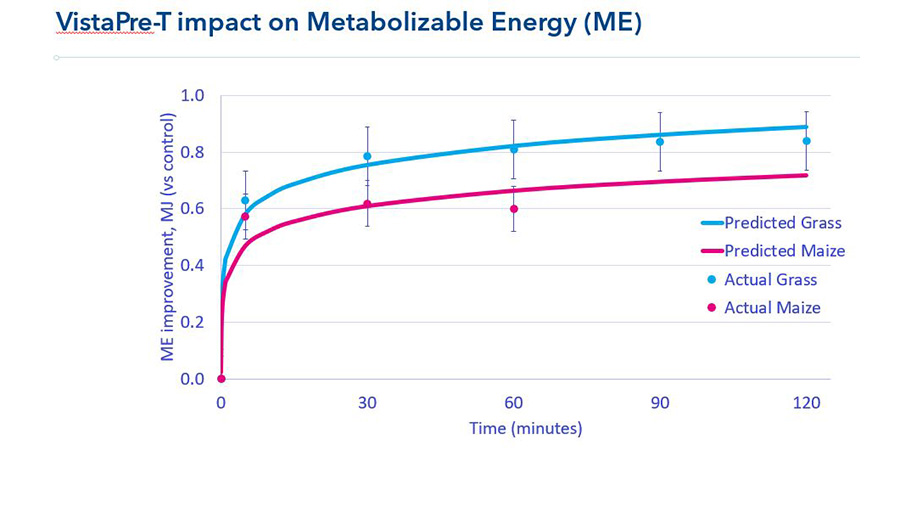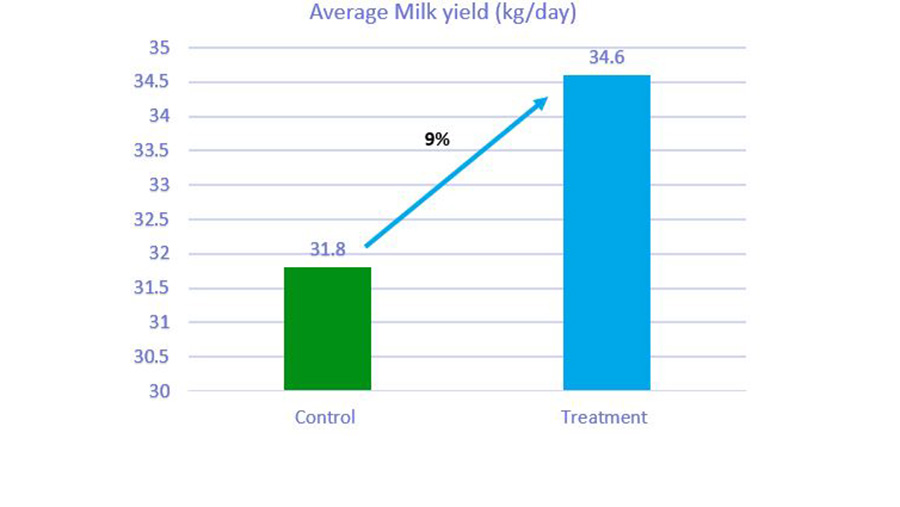Advertiser content
Smarter use of forage improves feed efficiency
Forage is playing an even more important part in the winter rations of ruminants this year, but the focus must be on efficiency if dairy producers are to support productivity and profitability.
It is more critical than ever that producers focus on making the most out of a home-grown, low carbon footprint material, to ensure maintenance of yield and quality.
Following the turbulent spring and summer of 2022, feed prices have been incredibly volatile, and the value of milk compared to bought-in feed has been on the decline.
Team this with poor grass growth, falling metabolisable energy (ME) and high neutral detergent fibre (NDF) levels, and there is a substantial challenge to maintain performance from forage, and consequently bridge the energy gap with potentially expensively bought-in feeds.
Increased feed efficiency
For forage with poor digestibility value, reduced quality and high NDF, Vista Pre-T could help improve forage utilisation, efficiency and productivity.
Vista Pre-T is a pre-treatment that can be formulated into the total ration to get more energy from home-grown forage, reducing the reliance on other costly cereals or additives such as protected fats.
It works to make the cellulose and hemicellulose fibre fractions more accessible to the ruminal fibre-digesting microorganisms, by roughening and creating pits on the surface of the feed material, to create more adhesion sites for the fibre digestors.
By reducing the lag time to digestion, the rumen’s natural ability to digest forage is raised, which increases the feeding value of the existing ration so we can expect more from less, or increased feed efficiency.
Laboratory analysis
Laboratory near-infrared (NIR) analysis of 74 grass silage samples showed that after Vista Pre-T application, an average energy uplift of 0.8MJ/kg DM was recorded.
This means that if the grass silage was provided at 35 kg/head/day (fresh weight) with a DM value of 32%, then applying Vista Pre-T would equate to an additional 8.96MJ of energy, which could potentially be around a 1.6-1.7 litres of milk increase/head/day.
The product works particularly well in higher NDF rations and forages, so with the forecast for 2022 forage quality, Vista Pre-T application is key in improved forage utilisation.
Commercial trial
In a commercial trial, the inclusion of Vista Pre-T to the grass silage-based total mixed ration (TMR) allowed the nutritionist to reduce ground maize, molasses and a protected C18, and increase the grass silage provision.
The ration remained consistent for a 44-day period in which individual daily milk yields were recorded and compared to 44-days prior to Vista Pre-T inclusion.
When using this “energy matrix” approach, the aim is to achieve equal performance as, in effect, energy has been removed from bought-in feed sources and replaced with the same amount of energy released from forage.
However, the trial saw an average increase in milk yield of 2.8 litres/cow/day, which could be attributed to the substantial improvement in fibre digestibility, and apparent nutrient utilisation seen through improved faeces consistency.
The producer made an additional £93/100 cows/day from Vista Pre-T application.
Smarter use of forage
Vista Pre-T boosts the rumen’s natural ability to digest forage and allows nutritionists and producers to use forage more efficiently.
Through smarter use of forage, there is less pressure on the pocket and the environment, as the energy content of the ration is increased, keeping feed costs down and feed efficiency improved.
Contact KW Feeds to see how Vista Pre-T could help you improve forage utilisation, efficiency and productivity.
Provided by
At KW, we’re proud to support our customers to achieve sustainable performance through unrivalled market expertise and a product offering second to none. We pride ourselves on being a feed and nutritional services partner to some of Britain’s top-performing farms.

